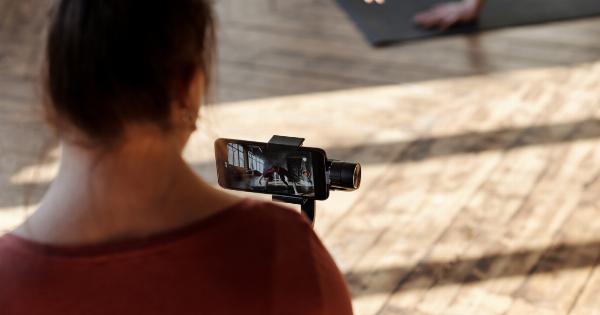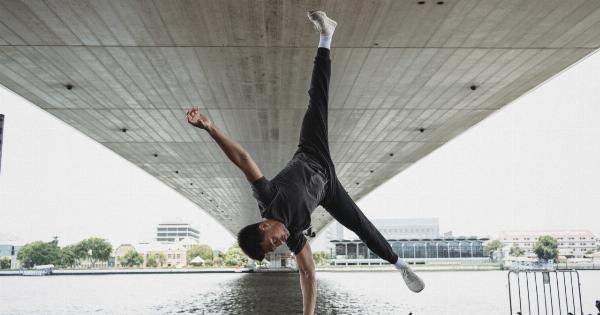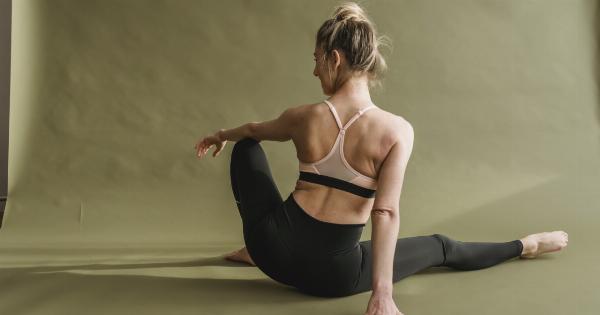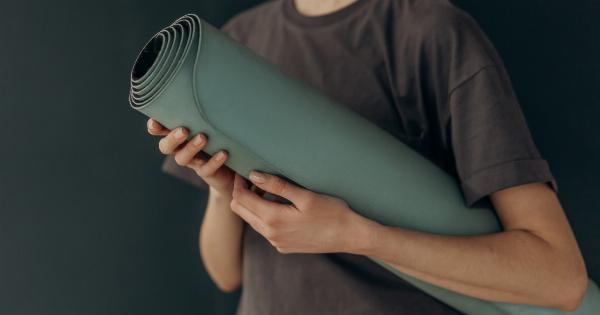Mid-back pain, also known as thoracic pain, can significantly impact a person’s quality of life. It can be caused by various factors, including poor posture, muscle imbalances, stress, or even physical trauma.
While medication and physical therapy are commonly used to manage this type of pain, yoga offers a holistic and natural approach to relieve and prevent chronic mid-back pain. This article will explore how yoga can help alleviate mid-back pain and provide specific yoga poses and practices that can bring relief.
The Benefits of Yoga for Mid-Back Pain
Yoga is a mind-body practice that combines physical postures, breath control, and meditation techniques. It offers numerous benefits for individuals experiencing chronic mid-back pain:.
1. Improved Posture
Poor posture is a common contributor to mid-back pain. Regular yoga practice helps correct slouching and rounded shoulders, aligning the spine properly and reducing strain on the mid-back muscles.
Poses like Mountain Pose, Cat-Cow Pose, and Cobra Pose are particularly effective in improving posture.
2. Increased Flexibility and Range of Motion
Tight and stiff muscles in the mid-back can increase discomfort and limit mobility.
Yoga poses, such as Child’s Pose, Seated Forward Bend, and Thread the Needle, target the muscles in the mid-back, increasing flexibility and range of motion in the area.
3. Strengthened Core Muscles
A weak core can contribute to mid-back pain as it fails to provide adequate support to the spine.
Yoga poses that engage the core muscles, such as Boat Pose, Plank Pose, and Bridge Pose, help strengthen and stabilize the muscles around the mid-back, reducing pain and discomfort.
4. Reduced Muscle Tension and Spasms
Yoga promotes relaxation and reduces muscle tension throughout the body.
By practicing gentle and restorative poses like Child’s Pose, Supine Twist, and Legs-Up-The-Wall Pose, individuals can release tension and soothe the muscles in the mid-back, easing pain and preventing spasms.
5. Increased Body Awareness
Awareness of body alignment and movement patterns is crucial for preventing and managing mid-back pain. Yoga cultivates body awareness through mindful movement and breathwork.
With consistent practice, individuals can identify and correct habits or activities that contribute to their mid-back pain.
Yoga Poses for Mid-Back Pain Relief
The following yoga poses are recommended for relieving chronic mid-back pain:.
1. Cat-Cow Pose (Marjaryasana-Bitilasana)
Begin on all fours with your hands aligned under your shoulders and knees under your hips. Inhale, arch your back, and lift your head and tailbone upward (Cow Pose).
Exhale, round your spine towards the ceiling, drop your head, and tuck your tailbone under (Cat Pose). Repeat this gentle flowing movement for several cycles, synchronizing the breath with the motion.
2. Child’s Pose (Balasana)
Sit on your heels, then slowly lower your upper body forward, extending your arms in front of you and resting your forehead on the mat. Let your chest sink towards the ground, feeling a gentle stretch in your mid-back.
If your forehead doesn’t reach the mat, you can place a yoga block or cushion for support.
3. Cobra Pose (Bhujangasana)
Lie flat on your stomach with your legs extended behind you, and place your palms next to your shoulders. Inhale, gently lift your head, chest, and upper abdomen off the mat, keeping your pelvis grounded.
Lengthen through the spine and draw your shoulders away from your ears. Hold the pose for a few breaths, then exhale and slowly release back to the starting position.
4. Thread the Needle Pose (Parsva Balasana)
Begin on all fours with your hands and knees aligned under your shoulders and hips. Reach your right arm underneath your left arm, placing your right shoulder and the side of your head on the mat.
Extend your left arm forward, feeling a stretch through your right mid-back. Hold for several breaths, then return to the starting position and repeat on the other side.
5. Seated Forward Bend (Paschimottanasana)
Sit on the mat with your legs extended in front of you. Inhale, lengthen your spine, and as you exhale, hinge forward from your hips, reaching your hands towards your feet.
If you can’t reach your feet comfortably, you can use a yoga strap or hold onto your ankles. Relax your head, neck, and shoulders, feeling a gentle stretch in your mid-back. Hold the pose for several breaths.
6. Boat Pose (Navasana)
Sit on the mat with your knees bent and feet flat on the floor. Place your hands slightly behind your hips with fingers pointing towards your feet. Engage your core, lean back slightly, and lift your feet off the ground, balancing on your sit bones.
If possible, straighten your legs, forming a V shape with your body. Hold the pose for a few breaths, gradually increasing the duration as your core strength improves.
7. Plank Pose (Phalakasana)
Start in a push-up position with your hands aligned under your shoulders and your body in a straight line from head to heels. Engage your core muscles and hold the position, ensuring your back stays flat and your mid-back doesn’t sag.
Modify the pose by resting on your forearms instead of your hands if needed. Hold for a few breaths, gradually increasing the duration over time.
8. Bridge Pose (Setu Bandhasana)
Lie flat on your back with your knees bent and feet hip-width apart. Keep your arms alongside your body with palms facing down. Inhale, press your feet into the mat, and lift your hips toward the ceiling.
Interlace your fingers underneath you and continue pressing your arms into the ground to lift your hips higher. Hold the pose for a few breaths, then gently release your upper back, mid-back, and finally your lower back down to the mat.
9. Supine Twist (Supta Matsyendrasana)
Lie flat on your back with arms extended out to the sides in a T-shape. Bend your knees, keeping your feet on the mat, and drop them to the right side. Keep your shoulders grounded and gaze towards the left.
For a deeper stretch, place your left hand on top of your right knee. Hold for several breaths, then switch sides.
10. Legs-Up-The-Wall Pose (Viparita Karani)
Lie on your back and extend your legs up against a wall so that your body forms an L-shape. Keep your arms relaxed by your sides with palms facing up. Close your eyes and allow your mid-back to release any tension with each exhale.
Stay in this pose for several minutes, focusing on your breath and allowing gravity to do the work.
Conclusion
Yoga provides a natural and effective approach to relieve chronic mid-back pain.
Its combination of postures, breathing techniques, and mindfulness promotes improved posture, increased flexibility, strengthened core muscles, reduced muscle tension, and heightened body awareness. By incorporating these yoga poses and practices into a regular routine, individuals can find relief from mid-back pain and enhance overall well-being.






























